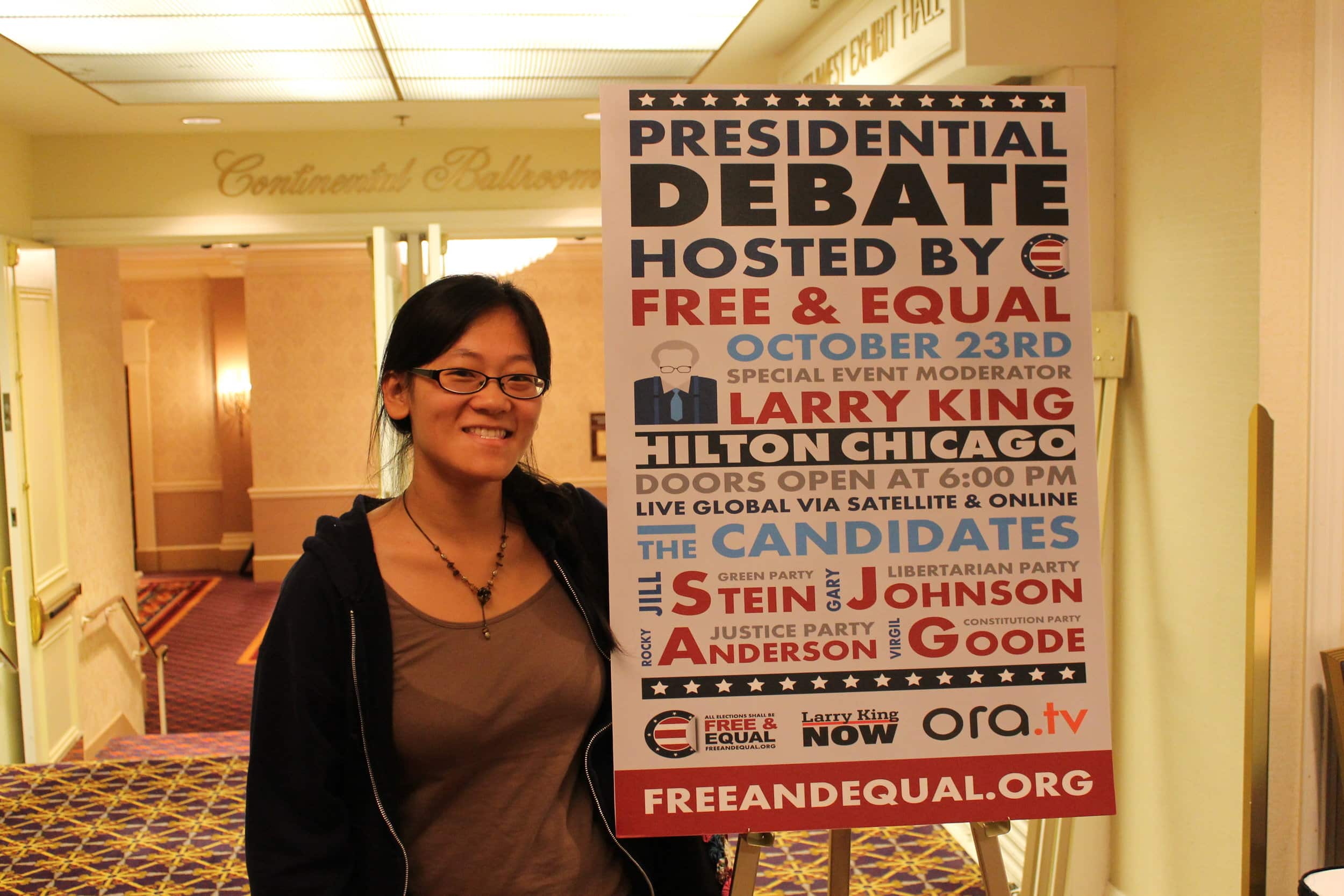
Should third parties be more than third wheels?
Connor Boulet, Staff Writer
Sign promoting Third-Party Presidential Debate between Green Party candidate Jill Stein and Libertarian Party candidate Gary Johnson on October 23, 2012.
The American people resigned to passivity on Election Day last year. Nearly 50 percent of the population declined to show their faces at voting booths throughout the country to proclaim their support for the partisan candidates.
In the face of such a startling statistic, one must ask the question: Whatís the point of a democratic society if nearly half the population feels their opinion is underrepresented by the primary candidates to the point they refuse to vote at all? Is the electoral system in place for the country accurately representing its voter base if many of them are no-shows?
Such may be the strongest argument for officially adopting a third-party in the U.S. In the interest of discovering why voters unsatisfied with the Democratic and Republican candidates havenít flocked to independent parties, David Tyner, the Department Chair of Political Science at North Greenville University, gave his opinion.
He explained the primary cause of a lack of support amongst third parties is the method through which seats in the House and Senate and spots in the Electoral College are distributed.
The United States of America runs on a plurality system. Essentially, the majority rules. Tyner explained that even though third-party candidate Ross Perot won 18.9% of the popular vote in the 1992 presidential election, he didnít win a single electoral vote.
Even with all of that support, without obtaining a majority in any particular district, he wasnít going to gain any ground in the election. Thus, any candidate interested in winning the Presidential Election needs to run under the Democrat or Republican banner. Even if a candidate gains a great amount of support from the voters, they simply donít have the money and presence the partisan candidates do.
Granting financial backing and support equitable to the Democrat and Republican parties to a new partisan group could be the key to reviving voter interest in the election. If neither of the bipartisan candidates interest the voters, they can instead cast their ballot for the third-party candidate.
In the 2016 election, a third-party candidate could have represented a middle ground between the far-right Donald Trump and the far-left Hilary Clinton. Perhaps many of the 46.6 percent would have thought twice about staying home that November 8. By beckoning them to vote, the U.S. gains the opportunity to better represent its diverse population.
However, this solution is far from infallible. According to Tyner, the Republican and Democratic parties represent a diverse spectrum of political stances that generally lean right and left respectively. By showcasing the gamut of political opinion, the Democrats and Republicans leave little room for a third party to make any headway in an election.
Voters dissatisfied with a candidate may be more inclined to stay home than vote for a third-party candidate who they may well see as radical in comparison. Additionally, the United States has been a 2-party system for centuries.
As a country on the verge of a potential debt crisis, the country is hardly prepared for the social upheaval such a drastic revamp would cause. The Democrat and Republican parties would certainly not loosen their shared monopoly on the U.S. political system without a fight.
At present, establishing a third party comes with far too many caveats to be a feasible solution to a dissatisfied voter base. Despite its intrigue, it simply is not the catch-all solution many dream it to be.

